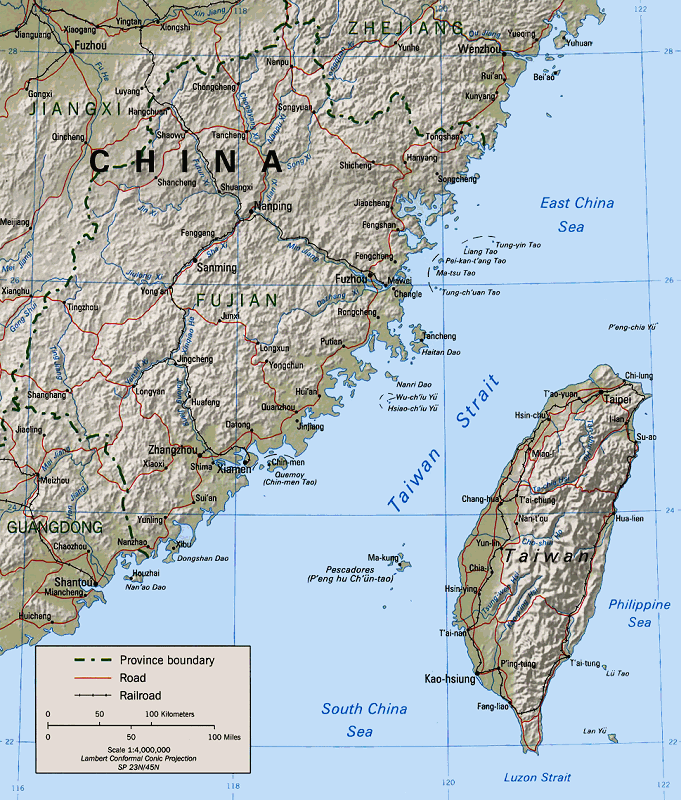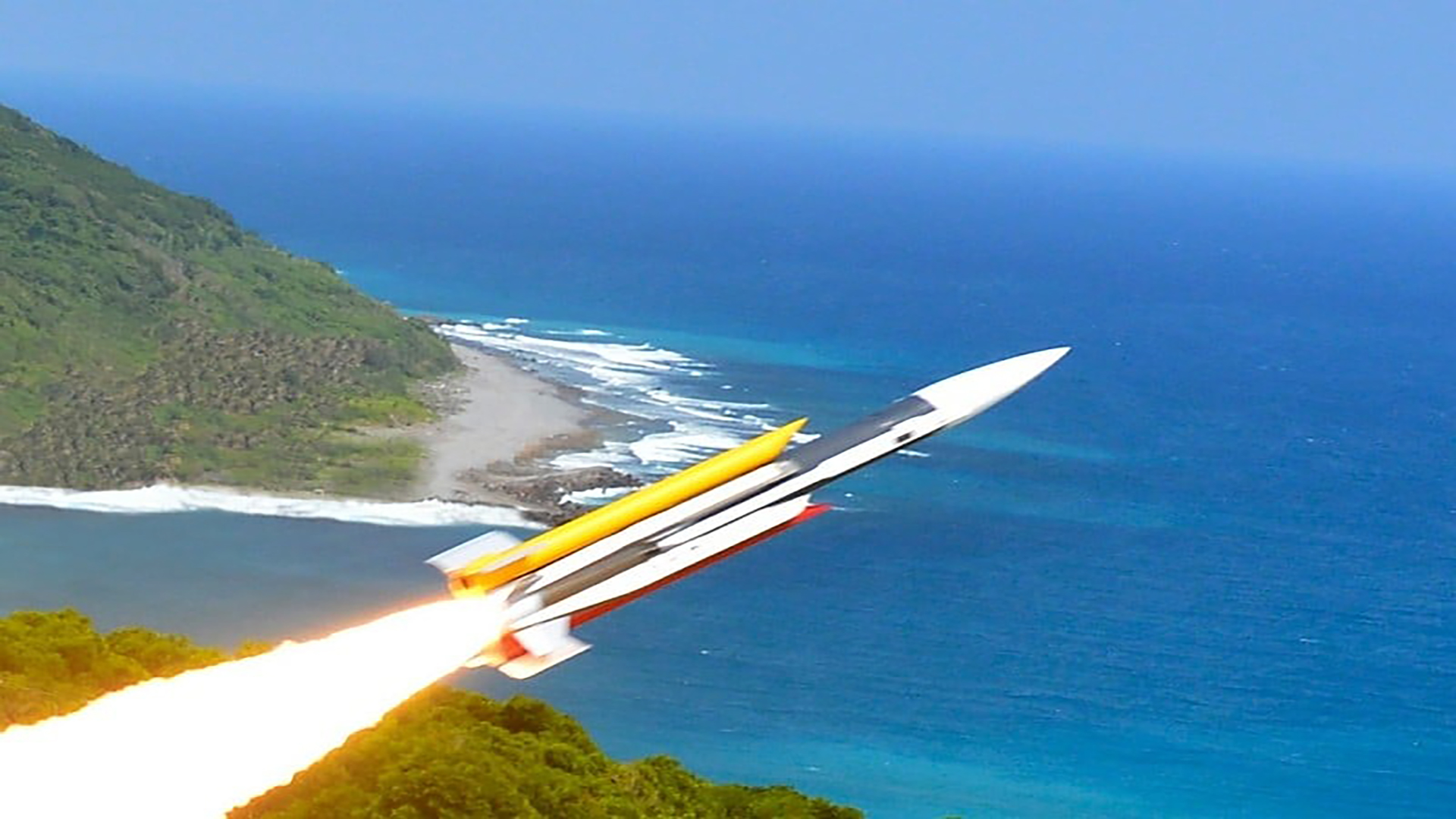You Si Kun, President of Taiwan’s Legislative Assembly, or Yuan, gave a speech on Taiwan Overseas Network where he declared that the country’s domestically produced Yun Feng supersonic cruise missile is capable of reaching Beijing. The message follows ominous warnings made by Chinese military officials directly to their U.S. counterparts to avoid the Taiwan Strait, claiming it is not international waters. However, the United States, along with the vast majority of the international community, does not accept China’s claims in this regard. This also comes as U.S. President Joe Biden recently vowed to defend Taiwan amid a crisis, although the statement was walked back to a degree, leaving allies to question how a crisis could pan out.
In his speech, You encouraged the Chinese government to think twice before invading Taiwan, reminding them that the largely secretive Yun Feng supersonic cruise missile is a capability they won’t shy away from using. The speech also underscored a growing desire held by Taiwan to develop a more self-sufficient military-industrial complex for the country to more freely prepare for a potential conflict with China.
These ambitions are echoed by purported pressure from the U.S. government urging Taiwan to decrease its focus on some advanced weapons procurement programs in favor of less flashy but potentially more combat-relevant initiatives. You compared his aspirations to Ukraine’s will to defend its sovereignty throughout its war with Russia, insisting that Taiwan should not wait for China to invade and instead actively prepare for what may prove to be inevitable. Liberty Times Net writes of You’s remarks:
You Xikun [Si Kun] mentioned that Taiwan’s defense advantage is due to the natural dangers of the Straits. The CCP [Chinese Communist Party] must cross the Taiwan Strait to attack Taiwan, which is different from Russia’s attack on Ukraine… If you want to land, you will fight on the beachhead. If the landing is successful, everyone in Taiwan must be as determined to die as Ukraine. Go out and never let China swallow Taiwan.
…
…Yunfeng missile can already hit Beijing, and Taiwan has the ability to attack Beijing. China must think twice before invading Taiwan.
Taiwan is reported to have begun discreetly developing the Yun Feng missile after the 1996 Taiwan Strait crisis, which started after a series of missile tests were conducted by the People’s Republic of China. The goal of the tests was to send a message to the Republic of China (Taiwan) government headed by Lee Teng-hui whose strategy was beginning to shift away from the One-China policy, and the efforts were largely successful in agitating both Taiwan and the United States. In response, U.S. President Bill Clinton deployed a carrier battle group to the scene and a crisis was averted.

China’s actions during the 1996 crisis led Washington to revisit the Taiwan Relations Act of 1979, which helped establish diplomatic relations between the United States and the People’s Republic of China, later convincing the United States to better support Taiwan and its military. Having this stateside backing bolstered not only Taiwan’s defense modernization efforts but thereby spurred China to do the same, acting as one of the most significant events in the evolution of military capabilities on both sides of the Strait. Without it, the Yun Feng missile may have never seen the light of day.
In an effort to avoid public scrutiny, Yun Feng’s flight tests were concealed by the test program for the Hsiung Feng III supersonic anti-ship missile and successfully avoided major media coverage until December 2012. Because much of its origin is shrouded in secrecy, the supersonic Yun Feng’s exact specifications vary between sources. In terms of its range, the general consensus seems to be that the original version was designed to reach targets located over 600 miles away.

However, in 2018 it was announced that Taiwan’s Ministry of Defense had allocated another round of funding to a plan named Qilin Project. The Qilin Project was meant to extend the capability of Yun Feng to launch micro-satellites into orbit as well as provide it with the ability to strike deep into China. Being that cruise missiles are typically not designed to fly anywhere near the kind of trajectory needed to launch something into orbit, the added use case could have been a cover. Regardless, the new variant is said to have been engineered with an extended range of 1,200-miles. If accurate, this would corroborate You’s claim that Yun Feng could successfully strike Beijing, which is located approximately 1,150 miles from Taiwan.
As are many of Taiwan’s domestically produced weapons systems, Yun Feng was developed by the National Chung-Shan Institute of Science and Technology (NCSIST) and was officially declared operational in 2014. In 2019, local media sources reported that NCSIST had cleared the system for mass production and that Taipei was setting out to build 20 Yun Feng missiles as well as 10 truck-based launchers.
In April 2020, local news outlets in Taiwan started reporting that Yun Feng was undergoing a series of test launches. The missiles, which are reported to have a ramjet engine with a solid-fueled booster, were fired from the Jiupeng military base in southern Taiwan under NCSIST’s observation. As more local Taiwanese news outlets reported on the missile test, theories surrounding the best use case for Yun Feng were discussed by the country’s defense officials.
“Su Tzu-yun, a senior analyst at the Institute of National Defense and Security Research, said the surface-to-surface missile could be deployed to weaken China’s combat capability,” according to a report from Taiwan News. “The weapon is believed to be able to attack strategic targets including airports, harbors, and command bases located in central China.”
Other news sources have outright declared Yun Feng as Taiwan’s ultimate policy against China. With Taiwan’s missile arsenal having been centered around defensive capabilities, such as anti-ship and air defense systems in the past, Yun Feng could provide the country with the chance to carry out potentially high-profile strike missions against an array of high-value or symbolic targets in China. Still, these missiles could not stop or even greatly degrade China’s ability to prosecute an invasion of Taiwan. There is some deterrence value in being able to strike Beijing, but China is a huge country with a hardened and redundant military infrastructure. At most, these conventional weapons could be used to hit critical infrastructure, like dams or nuclear plants, in an attempt for widespread effects. This is a horrible thing to ponder, but Taiwan being a non-nuclear nation doesn’t have the luxury of relying on a nuclear arsenal for robust deterrence. As China’s integrated air defense system continues to evolve and advance in its abilities, the threat these missiles pose in any fashion will also decline.
You insists that maintaining a will to defend itself will benefit Taiwan more than supersonic missiles ever could. Being that China’s numbers vastly outweigh Taiwan’s in nearly every capacity, a casual reminder of the capability that Yun Feng could provide may offer Taiwan the morale boost it needs to better prepare for what could come and remind China that Taiwan can strike their capital, even in a limited capacity.
As for China’s warnings that the Taiwan Strait isn’t international waters and that the United States to steer clear of the area, they will likely be ignored. The United States has routinely sent naval vessels through the strait as part of freedom of navigation exercises, and there is no sign that this practice will change anytime soon, although the next one may be a bit more intense than the last.
Contact the author: Emma@thewarzone.com
